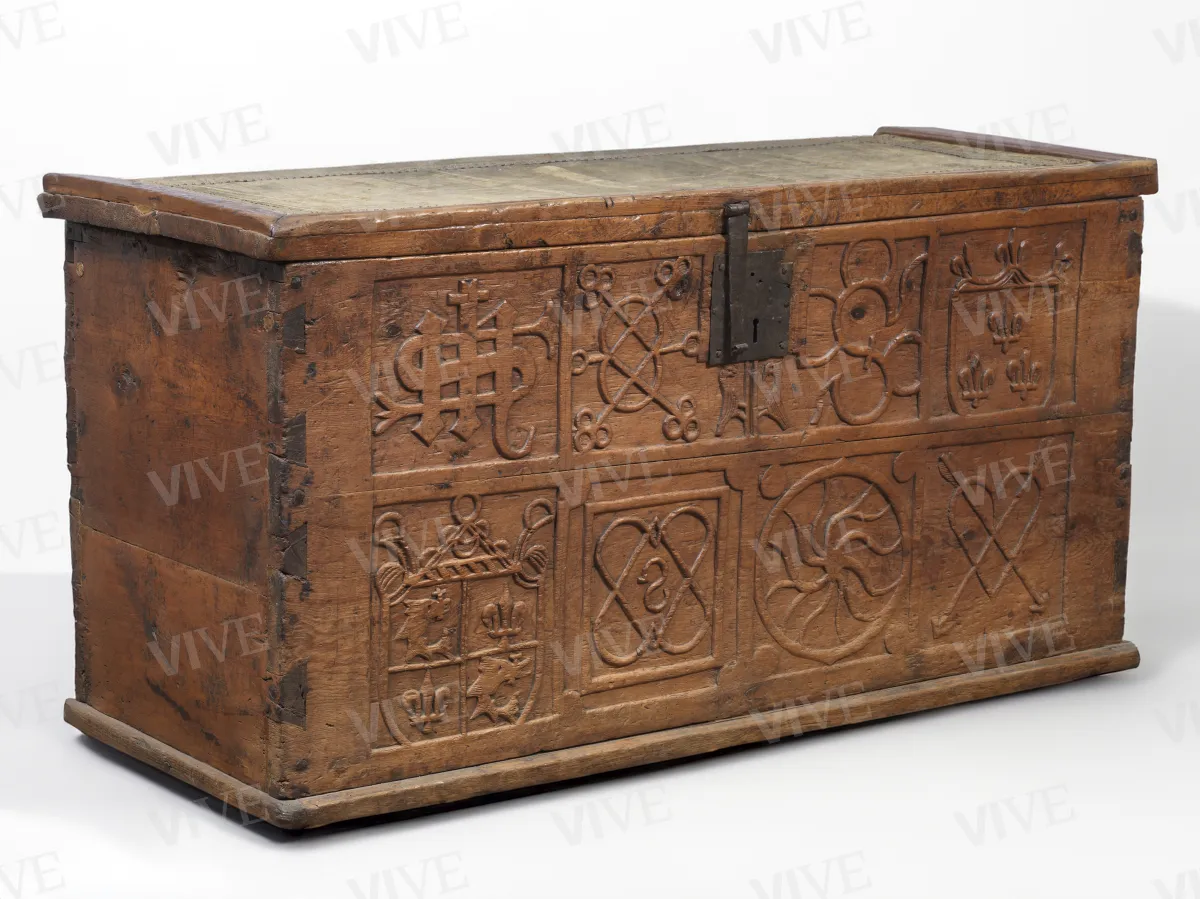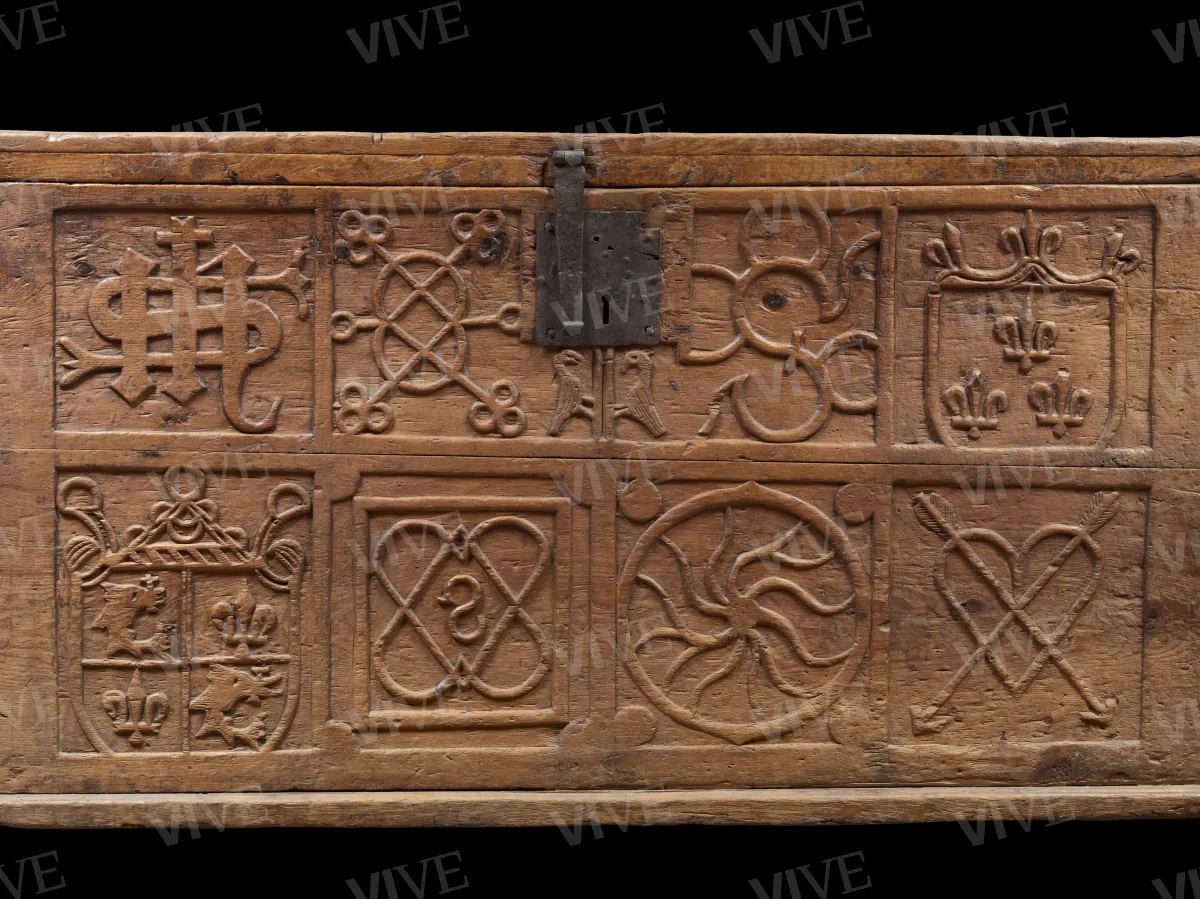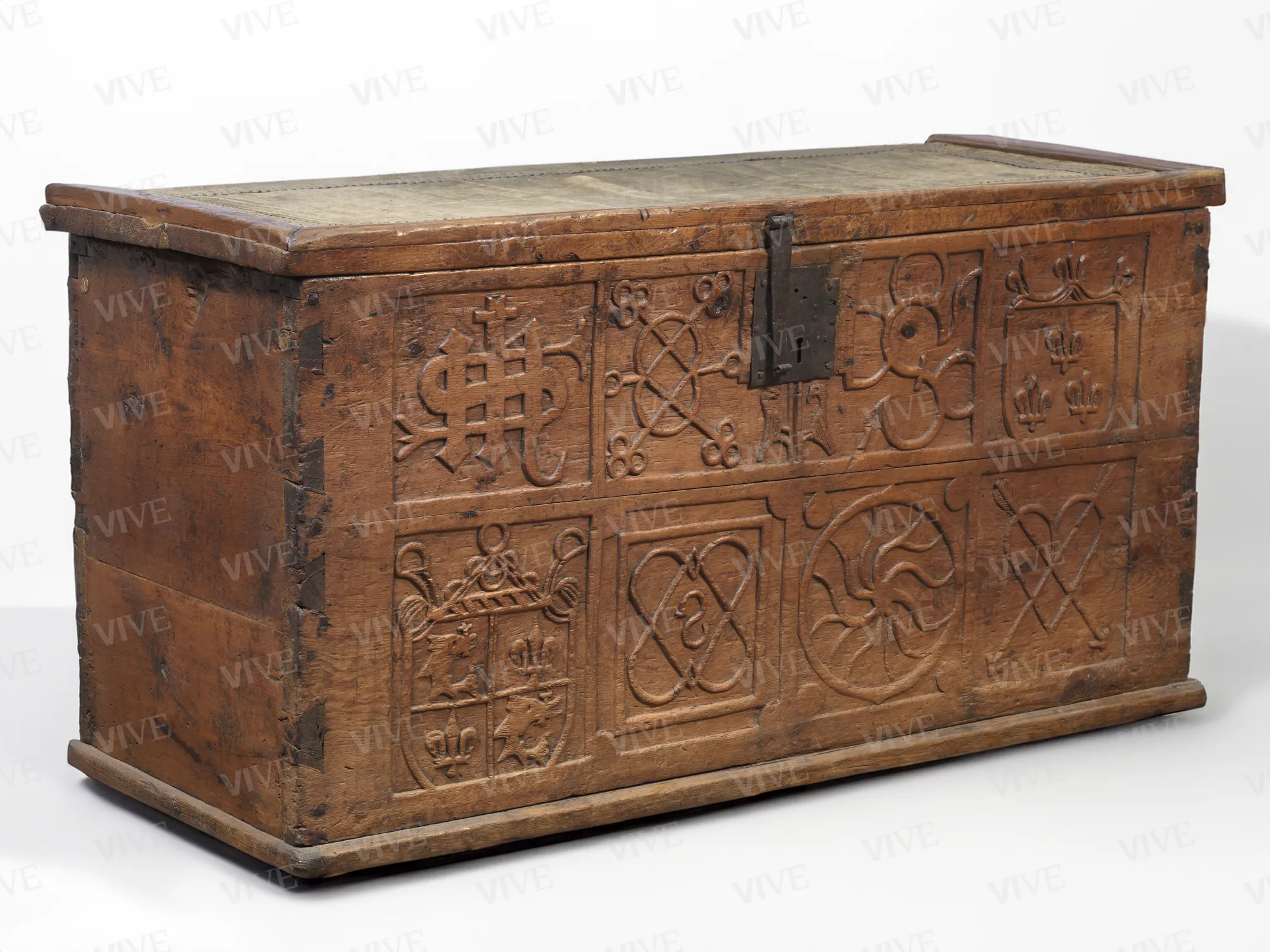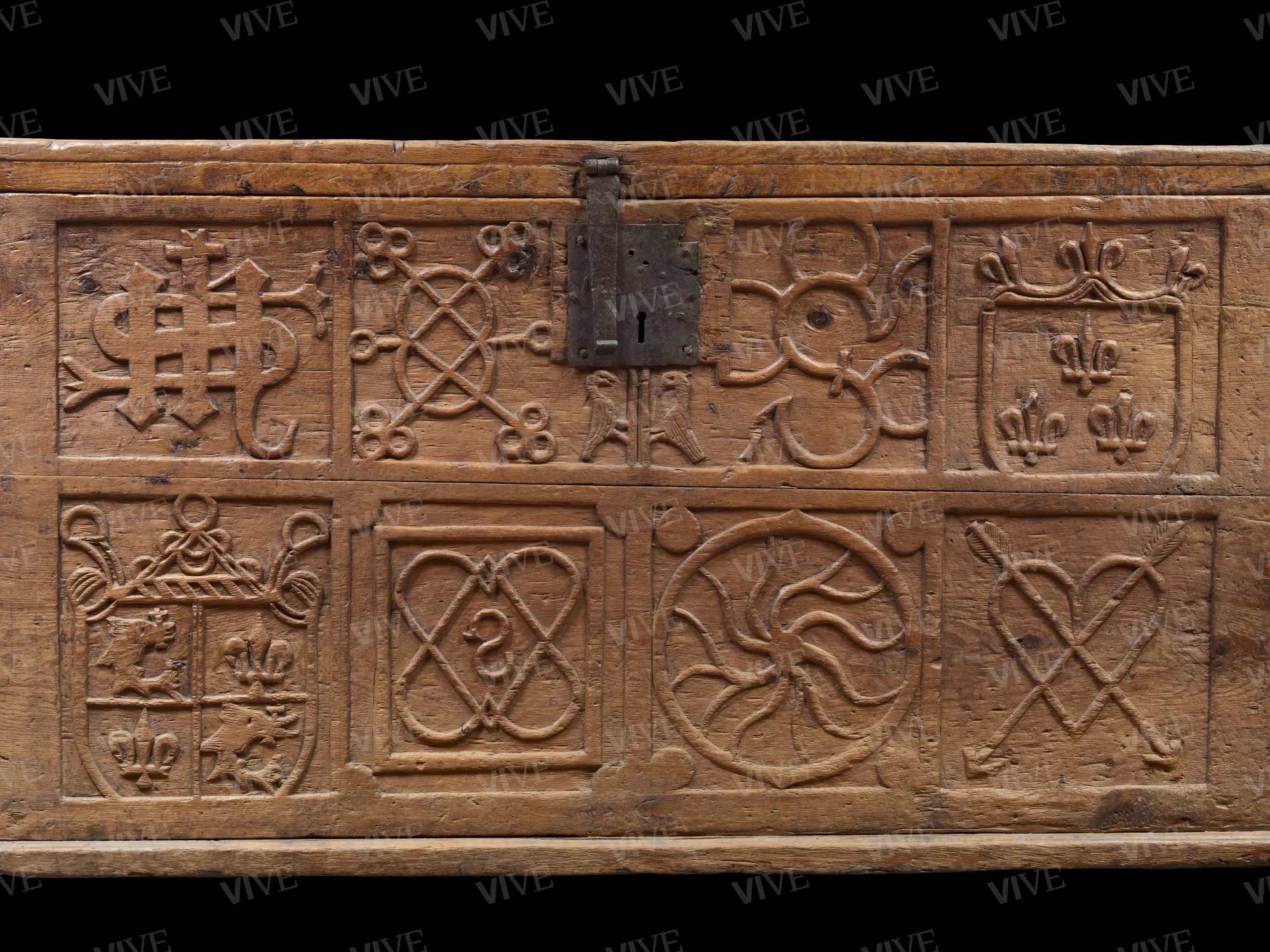Cassone
Southern France or northwestern Italy Mid-15th century
This cassone, featuring bas-relief tile decoration on the front, likely originates from south-eastern France or north-western Italy around the mid-fifteenth century. This is indicated by the presence of two coats of arms among the carved decorations, which can be traced to the kingdom of France and the Dauphiné.
This cassone, featuring bas-relief tile decoration on the front, likely originates from south-eastern France or north-western Italy around the mid-fifteenth century. This is indicated by the presence of two coats of arms among the carved decorations, which can be traced to the kingdom of France and the Dauphiné.
Details of work
Catalog entry
The cassone, crafted from stone pine wood, is composed of panels joined at the corners with dovetail joints and nails. It features a hinged lid secured by a wrought-iron lock and tied with iron hinges. The exterior is covered with green velvet fabric (possibly from restoration), attached to the edges by nailed wooden slats. The cassone’s sides exhibit simple workmanship, whereas the front is adorned with eight carved panels, arranged in two rows of four panels each, displaying heraldic symbols. Internally, a bulkhead divides the cassone into two compartments, with the right compartment being smaller.
Previously attributed in internal museum catalogues to sixteenth-century Tuscan or fifteenth-century northern Italian craftsmanship, the cassone can be more accurately associated with north-western Italian or south-eastern French production, as indicated by the decorations on its front side. These decorations include: the trigram “IHS”; intertwined round and straight lines (stylized keys?); the letter “S” with scrolls; a shield with three fleurs-de-lis; a shield framed with fleurs-de-lis and a dolphin; hearts intertwined with the letter “S”; a stylized sun; and a heart pierced by two arrows. Beneath the lock are carvings of two birds facing each other. The two shields display the coat of arms of the Kingdom of France and that of the ancient French province of Dauphiné, which spanned the Alps between the Rhone Valley, Savoy, and Provence. This title had been held by the French kings since the mid-fourteenth century. Further deciphering of the symbols could potentially identify the cassone’s owner, likely linked to the French royal family, perhaps during the reign of Louis XI, 17th Dauphin of Viennois and 9th of France, after which the title gradually fell out of use.
It is suggested that the cassone originated from this geographical area around the mid-fifteenth century. This hypothesis is supported by a comparison of the trigram “IHS” with a similar motif visible in a later wooden panel carved in bas-relief, now housed in the Bode-Museum in Berlin (inv. M 102), derived from a French woodcut circa 1500. The cassone entered the Palazzo Venezia Museum around 1930–1931 through a purchase made with the Hertz Fund, confirmed by a label inside the lid, from the antiquarian Achille De Clemente.
Lorenzo Mascheretti
State of conservation
Good.
Restorations and analyses
In May 2005, gas disinfestation was conducted at the Museo Nazionale degli strumenti musicali in Rome.
Inscriptions
Inside, on the lid, labels: “P.V. 5505” and “Acquistato col fondo Hertz” (Bought with the Hertz fund).
Coats of arms, emblems, and marks
On the front, coats of arms and heraldic symbols.
Provenance
Rome, Achille De Clemente, before 1930;
Rome, Museo Nazionale di Palazzo Venezia, purchased 1930–1931.
References
Hermanin Federico, Il Palazzo di Venezia, Roma 1948, p. 364;
Steiner Carlo, Del Puglia Raffaella, Mobili ed ambienti italiani dal gotico al floreale, Milano 1963, fig. 3;
Ghelardini Armando, Il mobile italiano dal Medioevo all’Ottocento, Milano 1970, fig. 5;
Colombo Silvano, L’arte del legno e del mobile in Italia, Milano 1975, fig. 159.














